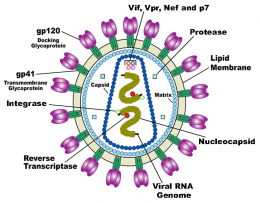HIV/AIDS long-term costs high—and unaffordable to most-affected countries

There will be a significant shortfall in the funding needed for HIV control in sub-Saharan Africa in the coming years and those countries with the highest HIV burden will be unable to meet their obligations on their own to sustain control efforts, according to a new study by researchers at Harvard T.H. Chan School of Public Health. They calculate that the price tag for providing long-term HIV/AIDS prevention and treatment in 2015-2050 in the nine sub-Saharan countries most affected by the epidemic ranges from $98 billion at current coverage levels to $261 billion if coverage is scaled up.
"The HIV epidemic is far from over," said first author Rifat Atun, professor of global health systems. "The magnitude of funding needed to sustain the HIV fight is very large and the consequences of complacency even larger."
The study appears online March 6, 2016 in BMJ Open.
Atun and colleagues looked at the nine countries that account for 70% of the HIV burden in Africa—Ethiopia, Kenya, Malawi, Nigeria, South Africa, Tanzania, Uganda, Zambia, and Zimbabwe. They modeled these countries' HIV/AIDS funding needs through 2050, based on four different scenarios of coverage levels, using data from Spectrum, a publicly available tool used by UNAIDS.
They found that scaling up HIV/AIDS prevention and expanding antiretroviral treatment to all HIV-positive individuals would cost $261 billion. The researchers say that 'front-loading' investments now will be necessary to ensure that higher levels of coverage are achieved. This would ultimately reduce HIV transmission and future funding obligations.
Domestic financing, the most important source of funding for HIV, will not be sufficient to meet future obligations, so new, innovative sources of funding will be necessary to both maintain and expand treatment and prevention.
"The problem of predictable and sustainable funding must be resolved," said Atun, noting in the paper that, "There is an ethical responsibility to continue financing for those receiving ART, and not abandon them to death."
More information: Rifat Atun et al. Long-term financing needs for HIV control in sub-Saharan Africa in 2015–2050: a modelling study, BMJ Open (2016). DOI: 10.1136/bmjopen-2015-009656
















